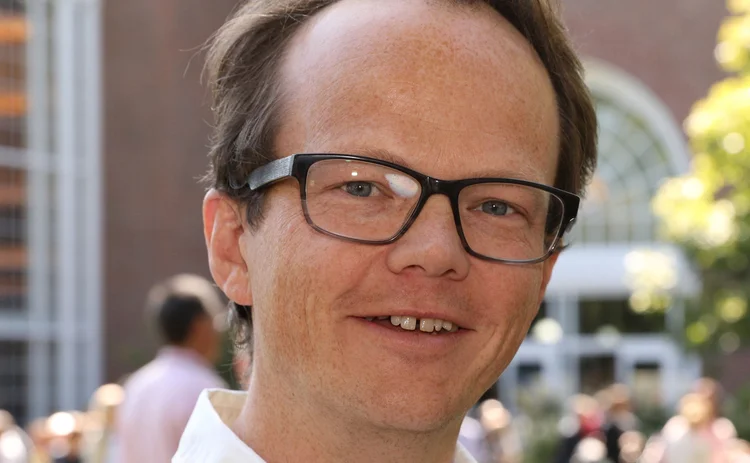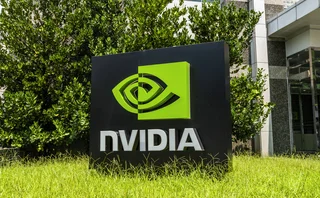
Stock-picking finds unlikely champion in ex-Winton CIO
Matthew Beddall’s Havelock restyles value investing for the big data age

“My wife likes to remind me that I joined one up from the tea boy,” jokes Matthew Beddall, of his 17-year career with quant fund giant Winton. Beddall distils his time at Winton, nine years of which he spent as chief investment officer, as having a “ringside seat” on the quant revolution in investing.
But now he’s doing his own thing. And it’s very different.
After decades playing his part in the rise of quant domination of the investment world, Beddall has done a complete volte-face, pivoting towards the sort of slow, forensic picking of winners championed by fathers of value investing Benjamin Graham and David Dodd.
In August 2018, Beddall launched Havelock London: a quant’s take on long-only fundamental stock-picking.
This is especially surprising because so-called value strategies in the form quants usually trade them have performed dreadfully in recent years. But Beddall thinks he can do a better job.
How? Through more targeted analysis of new data, selecting just a few stocks at a time, not the hundreds that quants usually do. At the same time, Havelock – more like a conventional quant shop – takes a probabilistic approach in picking its winners and uses risk management as part of its investment process rather than after the fact.
“I believe that understanding a business provides context that can enhance the traditional quant approach of looking at data in cold isolation,” Beddall tells Risk.net in his offices in Mayfair in London.
“We say we are a valuation investor rather than a value investor,” says Beddall.
The new value
The distinction matters. The way quants trade value – long/short, across huge baskets of stocks – has been in a 12-year-long drawdown. And whereas value investors look for cheap stocks, Havelock looks for stocks that are undervalued, even if some of them may be highly priced – Berkshire Hathaway is among its holds.
“All else being equal, if it’s a quality stock we’re prepared to pay more. If it’s risky because it has lots of leverage on the balance sheet or depends heavily on one customer, say, we’d be willing to pay less,” Beddall says.
Rather than focus on quarterly forecasts and set target valuations for individual stocks that take no account of uncertainty, as equity researchers typically would, Havelock takes a 10-year view on a company’s prospects. It then plots a distribution curve of plausible valuations. Companies whose stock is priced below the median of the distribution represent good value.
Plotting that distribution curve is made easier by the abundance of data now available.
All else being equal, if it’s a quality stock we’re prepared to pay more
Matthew Beddall
Quant firms typically gather droplets of company information for an ocean of stocks. Havelock aims to collect oceans of information on just a small pool of stocks.
In fact, the firm looks at an investment target almost as a private equity investor would: collecting data to assess the value of the business, understand its market, gauge the stability of its earnings, work out the idiosyncratic risks in owning its stock.
To some extent, this mirrors wider moves across investment firms towards greater use of data in fundamental investing.
It depends on getting the correct data, not the newest or weirdest, Beddall makes clear. “We need pinpoint accuracy,” he says. Illustrating the point, he says the firm sourced data on 50 years of computer memory prices to help understand the drivers of semiconductor pricing.
Though painstaking, this approach need not be costly. Havelock can often source free data from such atypical sources as telecoms regulators. And the appeal of services such as Winton’s Hivemind, which collects and organises data, might beckon in the future, he adds.
Too many robots
Beddall says he chose to set up a valuation shop because the “pendulum had swung too far” toward removing human judgment from investing. Critically, the final judgment on any position changes at Havelock is made by a human, not a computer.
At the same time, data has become ubiquitous. Beddall describes how in the past it required specialist databases and systems to screen for a list of companies meeting multiple criteria. Now that information can be accessed on the commute to the office.
“What was a competitive edge 10 years ago is becoming commoditised,” he says.
The advantage going forward, then, will be in extracting insight from the data. The rise of the tech economy, though, means old-style value would no longer work, Beddall says.
“When Benjamin Graham first wrote about value in the 1930s, it was in an industrial economy. Businesses invested in things like trucks and factories that sat on the balance sheet. Now Google’s data or its intellectual property in machine learning, its staff or its brand – that’s where the value is. It’s clear why, in the post-industrial age, value based on just the balance sheet won’t work as well as it did.”
Three risk forms
The firm thinks about risk as coming in three forms, Beddall explains: the risk of the stock underperforming; short-term volatility in pricing; and “distress risk” – the kind of risk created by hard-to-predict events, such as suspected fraud at Patisserie Valerie, or the restatement of Tesco’s profits.
On distress risk, the team makes a qualitative judgment. “We went down the road of doing something quantitative but moved back,” Beddall says. The risks faced by different types of companies are simply too varied. “Patisserie Valerie is a single-line business that sells iced buns on British high streets. Berkshire Hathaway, which we hold, is a heavily diversified business.”
Then, through portfolio optimisation – mathematically balancing risk and reward – Havelock selects its ideal stocks from a wider buy list and weights them based on its appetite for volatility, market exposure and the fund’s target maximum turnover of 25% annually.
When Benjamin Graham first wrote about value in the 1930s, it was in an industrial economy
Matthew Beddall
Whether Havelock seeks to diversify holdings across sectors depends on how risky the individual investment might be. In pulp and paper, the firm holds just one stock. In autos, where manufacturers face local risks and sentiment towards the sector is depressed, Havelock holds three, Beddall says.
Overall the portfolio holds about 40 stocks, far more concentrated than ordinary quant firms.
Fresh start
Why not launch the fund at Winton? Beddall says he thinks start-ups benefit from the pressure of being “a few people in an empty room with not much cash in the bank”. He was also cautious about launching a new venture that might be seen as antithetical to the brand of its parent. Winton has taken a stake in Havelock, which helped provide the firm with working capital.
It took 355 days from unboxing laptops to the fund going live. The founders approached the process like a technology start-up: building the simplest thing that worked as quickly as possible, then making it better.
Version 1.0 of the strategy was constructed within four months. Beddall, who had tested his ideas investing his own money while still at Winton, describes shaping the strategy for the new enterprise as like a child playing with a new box of Lego. “You know what all the pieces are, but when you open a new box you don’t yet know how to put it together.”
From inception, the fund was up 3.6%, as at the end of October, dipping into negative territory during the downturn in US stocks at the end of 2018, but climbing ever since.
Disruptor
Looking to the future, Havelock wants to disrupt not just value investing but also how asset managers charge fees.
The firm employs an all-in fee cap, meaning clients pay no more than 99 basis points on assets invested in the fund, regardless of how much the fund trades and what transaction costs it incurs. Havelock has one fund, one share class. All clients benefit equally from cost savings as it scales, says Neil Carter, Havelock’s chief commercial officer. Carter previously headed Europe, the Middle East and Africa for Jupiter Asset Management.
Usually funds impose an annual management charge, ongoing charges and sometimes additional charges on top for brokerage fees. Other asset managers such as M&G have capped ongoing charges. An all-in cap goes a step further.
Essentially, Havelock is taking the risk of costs run up by trading too heavily. For now, with just £14 million ($18.4 million) in assets and yet to reach the scale where cost efficiencies become meaningful, the firm is subsidising its clients. Carter sees this as building the trust that will give it an edge. Beddall adds that it imposes good discipline not to trade too much.
The team is giving itself five years to reach break even – Beddall is keen to stick to the theme: underpromise and overdeliver. Gathering assets without a three-year track record is slow going. But patience is a virtue of the value investor. And value’s future – at least in its new form – is secure in Beddall’s eyes.
“The principles of value investing are timeless, but I question the idea that it can be distilled into a simplistic and universal rule for investing as championed by the factor investing community,” he says.
Growth might have beaten value for the past decade, but value has beaten growth over a century, Beddall points out. That said, looking to the future, he adds: “The rewards are more likely to flow to those who look beyond simple ratios.”
Editing by Louise Marshall
Only users who have a paid subscription or are part of a corporate subscription are able to print or copy content.
To access these options, along with all other subscription benefits, please contact info@risk.net or view our subscription options here: http://subscriptions.risk.net/subscribe
You are currently unable to print this content. Please contact info@risk.net to find out more.
You are currently unable to copy this content. Please contact info@risk.net to find out more.
Copyright Infopro Digital Limited. All rights reserved.
As outlined in our terms and conditions, https://www.infopro-digital.com/terms-and-conditions/subscriptions/ (point 2.4), printing is limited to a single copy.
If you would like to purchase additional rights please email info@risk.net
Copyright Infopro Digital Limited. All rights reserved.
You may share this content using our article tools. As outlined in our terms and conditions, https://www.infopro-digital.com/terms-and-conditions/subscriptions/ (clause 2.4), an Authorised User may only make one copy of the materials for their own personal use. You must also comply with the restrictions in clause 2.5.
If you would like to purchase additional rights please email info@risk.net
More on Investing
Quants try investing like Socrates, with help from AI
Researchers are testing whether LLMs can use methods borrowed from ancient philosophy to answer complex questions
Precision-crafted: the new tools of investing
Key trends, tactics and innovations that are influencing investors’ thinking in the current environment
Expert vision, efficient execution
Why more investors are turning to third-party portfolio implementation platforms to maximise efficiency and impact
Podcast: Alexandre Antonov turns down the noise in Markowitz
Adia quant explains how to apply hierarchical risk parity to a minimum-variance portfolio
Bank of England mustering unit to model system-wide stresses
Permanent team at UK supervisor will work on buy- and sell-side interactions
Reverse dispersion gains traction as implied spread jumps
Inverted strategy on Euro Stoxx 50 gains popularity for profit-taking and correlation play
Why vol markets shrugged off Nvidia rout
Gamma, autocalls and stock dispersion helped prevent a broader market meltdown
Why JP Morgan’s Santos wants to make bad news travel fast
Asset management CRO says sharing information early holds the key to avoiding surprises








